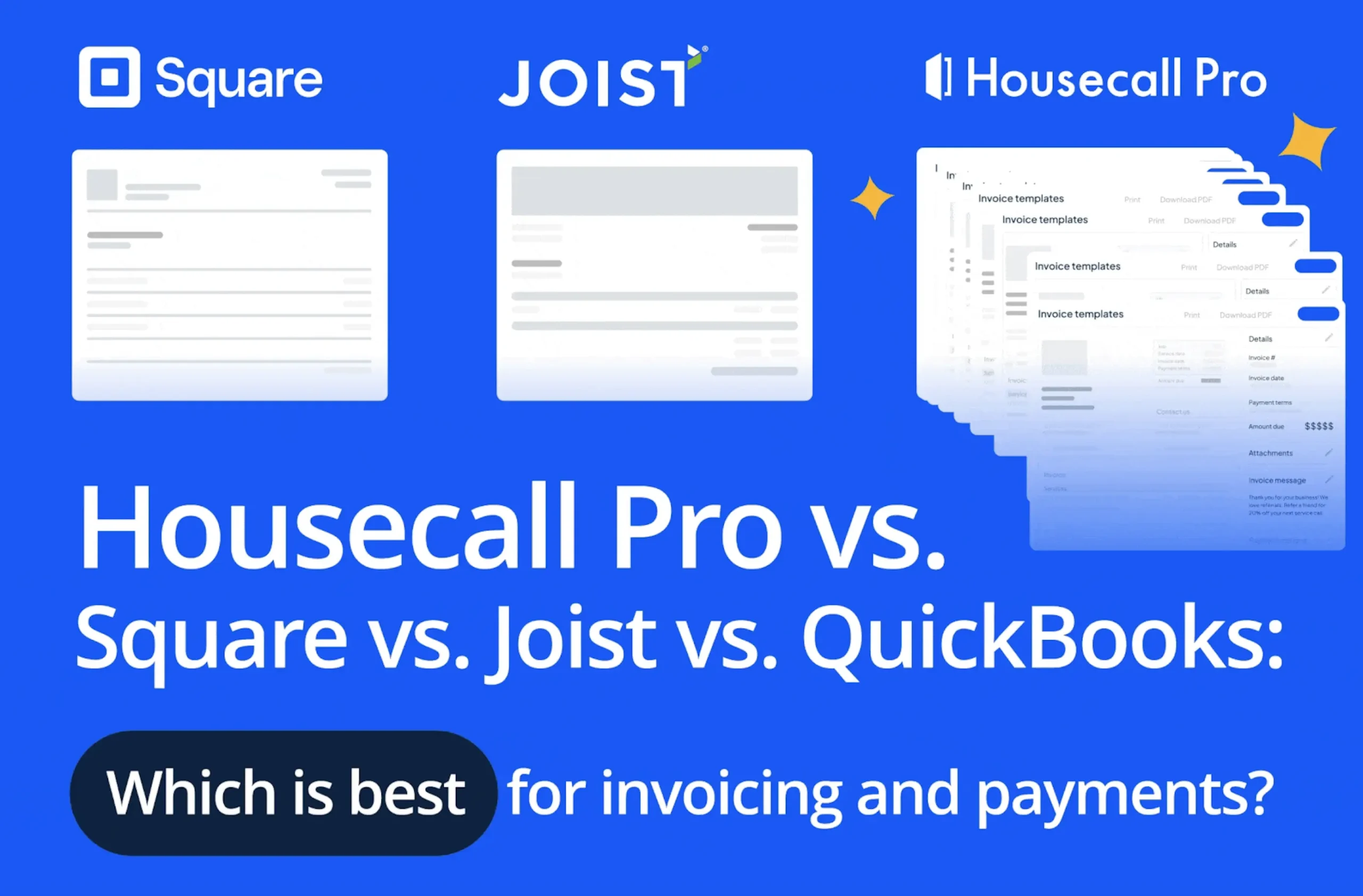
The home service business industry is trending big time right now. HVAC technicians, plumbers, electricians, landscapers, and carpet cleaners are a few of the many trade professionals that provide specialized services, for residential home owners to comfortably maneuver in everyday life.
From maintaining yards and air-ducts, to fixing roofs, and eliminating pesky rodents, the home services industry is valued at roughly $657 billion. The US online on-demand home services sector is growing rapidly. According to Verified Market Research, the on-demand home services industry is expected to post a compound annual growth rate of nearly 35.81% by 2026.
What’s happening here?
Part of the answer: it’s generational. We’ve got a huge contingent of consumers who now live on the internet, coupled with busy lifestyles that prefer their services on-demand through that medium. Another part of the equation: mobile accessibility. Smartphones bridge the worlds between real world services and instant online services.
If you can order that new toothbrush to your door, why not schedule a plumber to fix the sink too? The two go hand-in-hand for most consumers these days.
This nascent dynamic creates a new context for consumers and service providers. High-quality service becomes essential as customer loyalty is vital to survival for businesses in the sector.
Beyond quality, there are other keys to the home service business kingdom. To help you navigate this increasingly competitive landscape, we walk through the top home service business trends here in this downloadable guide:
Changes to the Home Service Business Market
Understanding how the home service business market is changing is key to your success. Who are the customers? What does the talent pool look like these days? How tight or fragmented is the market? The following trends provide important insights that begin to answer these critical questions about the industry:
1. Reliance on smart technology
It’s no surprise that cell phones greatly influence a consumer’s willingness to buy and pass on consumer products. The home service business industry is no exception to this. Cell phones greatly influence the average consumer’s purchasing power, from consulting influencer videos to hopping on a platform to read reviews.
Consumers now care greatly about how a product is received and reviewed before they invest in it, with good reason. Because of the rise of the smart phone, consumers come to expect services such as home booking capabilities and instant booking options that tie in with the busy millennial lifestyle.
2. Higher industry rates
Growth rates increased 20% in 2021 alone. This could have been due to a number of reasons: product manufacturing and skilled labor tapered off in comparison to consumer need. In 2021, we experienced sudden price increases and inflation which meant changes to the ways consumers spent their money.
The increase in industry rates caused consumer spend and home sales to decrease. These higher rates meant lest people were buying homes and moving turned into remodeling for many homeowners.
While inflation caused the buying power of the consumer to go down, it lowered mortgage debt impact.
3. A Highly Fragmented Market Meets Aggregation
One thing that won’t change in the home services market is that it is highly fragmented. There’s a low barrier to entry and lots of poor service providers persist within the market. At the same time, aggregators that offer customers access to all sorts of home services will continue to appeal to customers with local providers offering flexible schedules and low prices, regardless of the quality of their services. This means that providers have to offer, at a minimum, all of those benefits along with superior service to stay ahead in the game. Customer aren’t always weighing all of those criteria equally, so make sure you’re ticking all of their boxes because they all will affect your bottom line.
Current Shifts in How Home Service Are Being Offered
After looking at customers and providers in the market, it’s important to assess the new ways in which services are being offered within the market itself. These shifts are occurring, in part, due to economic and technological macro-trends and they have very specific implications for the home service market.
4. Greater Commoditization of Services
With the merger of HomeAdvisor and Angi as well as the rise of services like Amazon Home Services and Local Services by Google, consumers have more and better options at their fingertips. This means that they are beginning to look at home services as more of a commodity, with a deeper focus on reviews, response time, and pricing. Looking forward, consider revamping your paid search strategy, streamlining how you manage your leads, and optimize your reviews so you’re better able to stand out from the crowd.
**Tip – Check out our list of sites like Angi to stay ahead of the competition.
So what does this mean for your home service business?
In short, low pricing is no longer enough.
Greg Villafana and Tyler Rasmussen, owners of Brothers Pool Service and creators of the Pool Chasers podcast, know the market extremely well and have an idea about why this is the case. They argue that customer demographics are shifting and that people have a Google/Amazon mindset. This translates into customers who default to what Google suggests or whatever comes cheap and fast via Amazon.
For service providers who offer quality services–even those with a solid existing book of business–this can be devastating.
The move here is for companies to use these growing platforms as tools to market their quality services rather than seeing them as obstacles standing between them and existing (or potential) customers. In short, adapt or watch your customers go elsewhere.
5. Online, on-demand home service market + bundling
As Matthew Kanas at Intuit Canada noted, “If Amazon can deliver a package within 24 hours or the same day, why can’t home service businesses deliver on the same time frame? This is the mindset the home service industry will need to take.
In other words, get ready for the home services market to become completely “Uberized.” Consumers not only want services on-demand, they seek simplified ways to book related services. For example, when you book a flight through United and you’re checking out your reservation, the airline offers an option to also book a car to airport via Uber. This is called “bundling” and consumers love it.
The tip here for providers is to find ways to bundle your services in with relevant, related services customers are already purchasing as a way to drive business your way. Time is of the essence for consumers more and more, so help them save those precious hours by putting your business in front of them before they know they need it.
6. Technology is changing the home service industry, rapidly
Think about how consumers now deal with their unwanted household items. They take a picture of it using an app like OfferUp or Letgo and list it for other consumers to purchase. These apps use artificial intelligence to identify the item and show a potential price for the goods pictured. A customer can just click “Accept,” whereas before they had to type everything out themselves.
Now think about how that impacts the home service industry. Customers will soon be able to use voice recognition technology to request a home service provider for a specific problem and get an instant quote. They will soon be empowered to take a picture of a household fix they need and get a quick estimate from a local provider scrolling through customer requests on her phone. New visualization technologies now allow consumers to measure every detail with one click.
Adaptation of applications through the explosion of smartphones and mobile broadband has created emergent, consumer-facing sites and mobile apps. Customers seeking home services are now more likely to trust these apps and use them to secure the home services they seek than ever before.
Home service providers who embrace the opportunities technology is bringing into the market will produce faster and more accurate quotes for customers, stronger leads for their businesses, and ultimately a bigger bottom line for their companies.
7. Luxuries become necessities
Two important generational phenomenon are happening here.
First, millennials increasingly run their homes like a business, thinking of time as a more precious commodity. Second, the on-demand economy has created a new class of workers that function between working for a specific company (often remotely) and self-employed individuals and freelancers. Taken together, this creates greater demand for speed and convenience when it comes to home services as these new roles themselves were created out of previously-existing inefficiencies.
This new class of workers has increased spending capacity in many cases and they’re prepared to spend it on home services that were previously seen as luxuries. Their time is simply more valuable and they want the home services to meet this new demand.
It should also be noted that this trend makes pricing much more volatile in the home services market. Pricing continues to a be a central challenge facing home service providers. With no standardized approach and the industry as nascent as it is, this can add instability to the prices consumers face and home service providers must compete with. There seems to be a growing trend of discounts and companies are geared towards consumer acquisition and retention through pricing methods.
The generational shift in how consumers think about home services and the ensuing changes to how those services are priced represents a wave that providers will have to catch if they want to succeed in a changing market. Framing their services as home necessities with flexible and attractive pricing options for consumers will be the key to surviving and thriving amidst these shifts.
8. Client communication channels are evolving
HousecallPro HomeServiceBusiness ClientCommunication
The frequency and ways in which home service businesses stay in touch with their clients is changing–fast.
Recent studies show that 56% of people would rather message a business (on a social media platform or website) than call them for customer service. At the same time, many home service businesses are not equipped to receive messages across multiple platforms such as SMS or Facebook Messenger. If one out of every two customers wants to reach out to you in this way and you’re not set up for it, you’re missing a huge segment of your potential customer base.
Home service businesses across the board are developing and deploying great content to build their audiences–even through video on platforms like Facebook and Instagram. With consumers searching for everything online these days, having professional-looking, ready-made content showcasing your skills as a home service professional will be the first point of contact for many new customers.
Think about it: A helpful tutorial video that helps a customer diagnose a problem they’re having might make them more likely to purchase your services for that problem or another issues they’re facing down the line.
Home service providers who want to win in their markets today and in the future must recognize: customers will find and judge your business on your appearance on these platforms regardless of the quality of your work. It’s a new reality to cope with, but also an opportunity to showcase your skills and the quality of your work.






